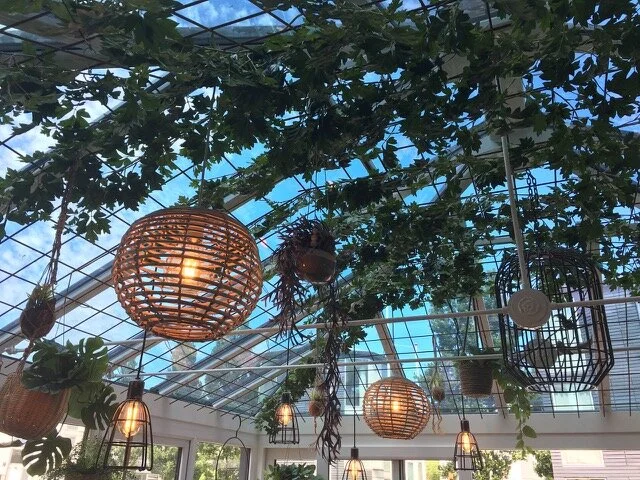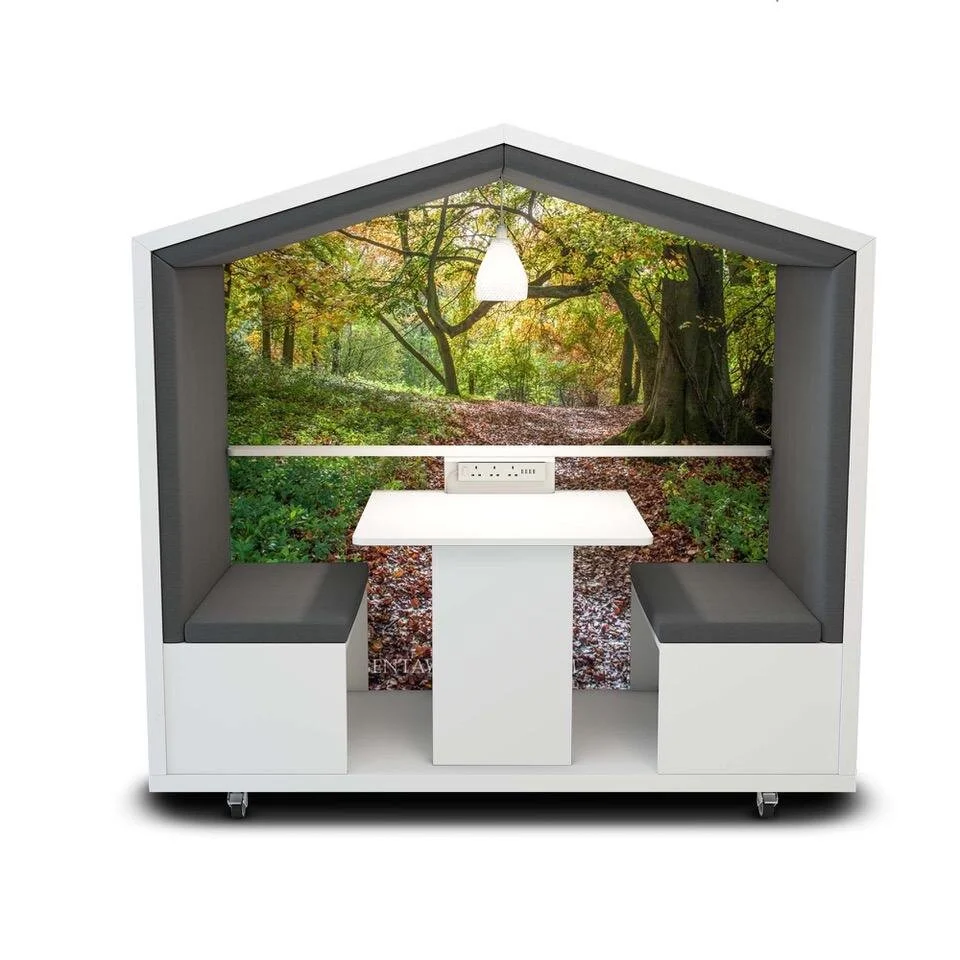To Luminous Spaces founder, Maureen Calamia, Feng Shui and Biophilic Design are two expressions of the same concept, in many ways Biophilic Design is a modern take on Feng Shui. Both advocate using live plants, natural materials, natural light. Feng Shui is more intuitive, it’s an art and feeling, Biophilic Design is more scientific and based on research, but Biophilic Design also comes from an intuitive knowing that we are not separate from nature and when we put ourselves in spaces devoid of nature we don’t feel good.
Why Biophilic Design should be essential in Healthcare
Maggie’s Cancer Care Centres have embraced and celebrated biophilic design not only in their interiors but also in the fabric of the architecture, the landscapes and views of nature, plants and trees within and without their buildings. And it is making a phenomenal difference. As the seasons change, so the views change. “Nature is Joyful, and it helps us feel joyful and when we feel joyful we can handle so much more of what life throws at us.” Maggie’s is visionary, it’s mould-breaking and is important evidence that biophilic design is ESSENTIAL in healthcare….
How a NASA Study led to "Forest Air"
In 1986 NASA was researching the ability of plants to absorb harmful gases. Their research had a huge impact on author and precision mechanic Jørn Viumdal who went on to set up Greentime AS. He contacted NASA and they began to develop the space stations of the future and researched how they could use nature to improve the air quality on board the space stations…
What do Biophilic Design, Feng Shui and Wabi Sabi have in common?
Acoustics, planting, colour ways, furniture design, textures, space all have an impact on us. Whether this is at home or in the workplace, how we decide to design these spaces can make a whole difference to our mind set, they can make us stressed and unproductive or they can make us focussed, calm and inspired. We have control on what we create. We have a duty of care to ourselves to make sure we respect each other enough to want to make our homes and offices, hospitals and so on nice places to be…
6 Things to Know about Biophilic Design Today
Will landscaped offices be the thing of the future? Will office spaces and homes merge into one? Why should learning environments like schools really need to take note and incorporate biophilic design elements into classrooms and buildings? Maggie Procopi is co-founder and owner of popular Workplace Trends series of conferences held in London, Madrid, Delhi and elsewhere as well as online, our editor Vanessa Champion asks her opinion on current trends, pets, how biophilic design isn’t just plants, how to embrace circadian rhythms and just what exactly is grounding?!
Moveable sanctuaries…
Moodsonic - breaking the silence
We work so hard to make our working, home and leisure environments acoustically better that we may be overlooking an essential aspect, our need for “sound”, our need especially for the “sound of nature”. Back in the office many of us work in cacophony or we are discovering during this “lockdown” that we live in homes where the TV is too loud, our hospitals are often crazy busy noisy environments, everywhere designers are struggling to clean these spaces of aggressive and distracting audio disturbance, but once we do that, how do we know that these spaces provide us with the optimum environments for focus, creativity and wellbeing? …
Room by Room Makeover using Biophilic Design
The world is in Lockdown, we are all probably going a little stir-crazy, looking at the same four walls and thinking that some of our rooms are driving us nuts and we’re not quite sure why…
How can we use colour, light, sound and biophilia to improve our homes when we can’t get out to buy the things we would like to make or homes really cool places, but don’t despair, using clever, simple and quick fixes we can make our spaces great spaces to be in.
We speak with Sally Augustin environmental psychologist and author of Designology about how we can improve our home space room by room while we are in lockdown during the Covid 19 period.
5 Fixes to Improve Working From Home
If you are working from home for the first time during this Covid 19 Lockdown, or maybe you have always worked from home, there are some simple biophilic design “tweaks” you can do to really improve your workspace. From clearing clutter, to your lights, nature views, air quality and even sounds to improve your space, help you focus more, be less stressed, be creative and productive too. We speak to Sally Augustin, author of the great book “Designology” to find out what we can each do right now without having to go out or take up too much time out of our day.
Environmental Psychology - We are who we were
Many things have changed for humans since their early days as a species—how excited do you think early Homo sapiens would have been by heating, air conditioning and weather tight structures to install them in, for example?
Not everything is different, however. We still have fundamentally the same brains as the first creatures we would recognize as “one of us.” That means we process and respond to the basic sensory inputs we see, hear, feel, taste, and smell today as our earliest human ancestors did.
Neuroscience research suggests that those sensory consistencies may be why biophilic design gives us such a powerful mental boost today. Biophilic design applies the same sorts of design principles in today’s built-environments that were naturally present in the outdoor settings where we were at ease aeons ago, when our bodies took on their current form. We still feel comfortable in biophilic spaces today, and the sorts of experiences that we have in biophilicly designed spaces boost our cognitive performance, for example, and for some of us even enhance the performance of our immune systems.
Our brains continue to respond positively to the sorts of sensory stimulations that long ago signalled good times, or at least that bad times were unlikely.
So, what are the principles of biophilic design?
In a biophilic space, there is moderate visual complexity. This means that there is order in the world around us, and a carefully edited palette of colours and shapes in play. Moderate visual complexity makes it less stressful for us to continuously scan the world around us—something we still do without considering what we’re up to today, just as our forebears did aeons ago to determine if there was danger nearby. Clutter creates high visual complexity, which is why it makes us tense.
We speak with Environmental and Design Psychologist, Sally Augustin. Sally is also Principal at ‘Design with Science’. She is also Fellow of the ‘American Psychological Association’ and author of “Place Advantage: Applied Psychology for Interior Architecture” (Wiley 2009) and with Cindy Coleman, “The Designer’s Guide to Doing Research: Applying Knowledge to Inform Design” (Wiley, 2012).










